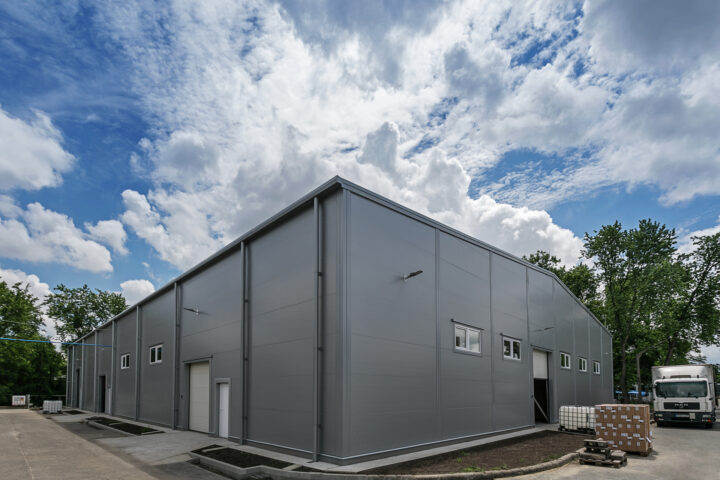
On their website, they say that they are “targeting more complex projects that require more intensive engineering work, which can test our own and collaborative engineering team who love a challenge.” What does this team know?
Our company, which is essentially an engineering firm, has been operating in its current form since 2013, but my colleagues and I have been in the construction industry for decades, mainly together. The company is based in our design department. Here, a team of specialist engineers work together to produce designs and houses that best match the client’s specifications. Residential buildings, public buildings, churches, agricultural halls, in our country, and in the surrounding countries, prove that we can create well-functioning, comfortable and optimal artificial spaces, for a wide range of activities. And then there are of course the lightweight structures, created for industrial orders, which play a key role in the life of our company, as they are the most complex challenges, in terms of function. I’m not saying that building a huge indoor stadium, or a railway station, for example, is child’s play, from a structural point of view, but when it comes to building factories, we have very specific needs and safety requirements. Not to mention the time factor, where it is in the investor’s best interest to get his investment up and running as soon as possible.
Chemical industry buildings, for example, are often used for activities relating to explosive materials; production, packaging and storage of flammable products, which require a specific technological design. Our engineers are experts in the specific requirements of seven to eight disciplines, who have mastered the special design methods, beyond their basic training. Some are able to use scientific specifications in order to design routes for the transport of alcohol, or LPG, in a building, for example, and to mitigate the effects of explosions or fires, while others are able to design clean spaces, free of microscopic particles that are considered contaminants to a given operation. Such a hygienic environment, with filtered air, is needed in the pharmaceutical industry, but also in the electronics industry, when chips, or miniature components, are manufactured. We also have experts working on optimising the energy performance of industrial buildings, including cold storage design. The transparent and accessible positioning of complex, interdependent mechanical systems that ensure the operation of the building, or that indicate hazards, also requires great care and skill. Because we have suitable people, we are able to deliver engineering excellence for highly complex building systems. And this is appreciated by the market, as we now typically undertake contracts of between HUF 50 million and HUF 1 billion, as general designers – often including the steel frame of the main supporting structure, and its construction.
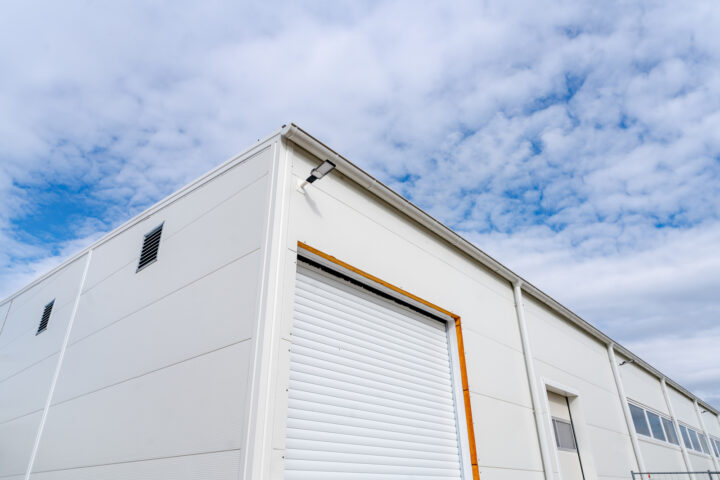
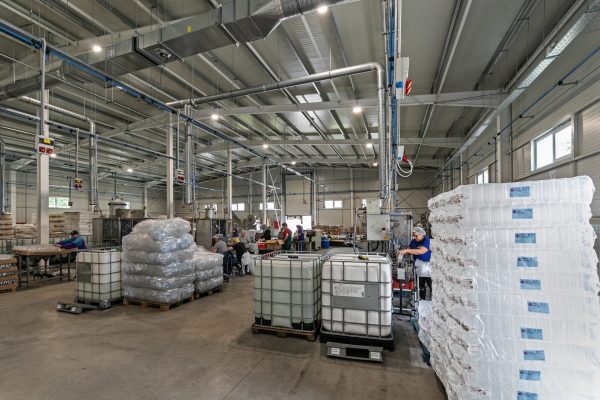
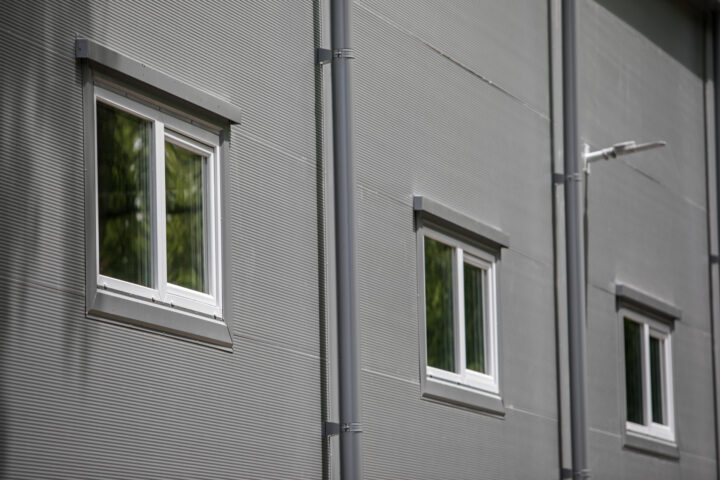
Can the FLORIN series of projects, where new factory halls were built, and are still being built, for a hand disinfectant factory, be considered such an “engineering feat”?
To give you a sense of the importance of this work, I would like to remind you of the somewhat surprising news last year, that a large hospital building was erected in China within a few weeks. Yes, but what was not reported, was that the plans and the components to build them had been completed well in advance. The achievement, therefore, only concerned the assembly of the hospital. In our case, however, April 2020 brought an almost mythical turn of events. We were given a task, almost as impossible as that of the owner of the two pepper oxen: to cut down the forest, from evening to morning, and the next night to plough the place, sow it, and even harvest it. When there was a sudden need for large quantities of hand sanitizer during the first phase of the epidemic, Florin Chemical and Trading LLC. approached us to see if we could build them a 1,500 m2 hall, within the given parameters, in a month. We just asked, when we could start. “Well, tomorrow!” – came the reply. And we were able to respond, even though it was no easy task: in five weeks we had designed and implemented a greenfield project from scratch, and to a high standard. To date, this plant has met a significant part of the country’s hand sanitiser needs.
As we have done many times before, we have been thinking about Swedsteel’s secondary structural profiles, from the very beginning. Not only because of the high quality of their products, but also because of the need to build a hall with enhanced fire safety, to accommodate the potentially explosive chemical activity. The reinforced concrete and steel main support structure, which we partly manufactured ourselves, is more resistant to extreme conditions, due to the material’s properties. However, the subsystem of cold-rolled, thin-walled – and therefore lightweight – beams supporting the fire-resistant sandwich panels requires special sizing to comply with the fire regulations . Swedsteel’s chief engineer, István Kotormán, however, developed a control calculation system based on the “rope test”, which is already known from statistics, but rarely used in practice, and supported by manufacturer’s experiments. This can be used to design a system of beams that also meets higher fire safety requirements. So, for the Florin hall, we not only bought profiles from the manufacturer, but also – considering them as a serious engineering partner – intellectual services. This was an important factor in the effectiveness of our cooperation.
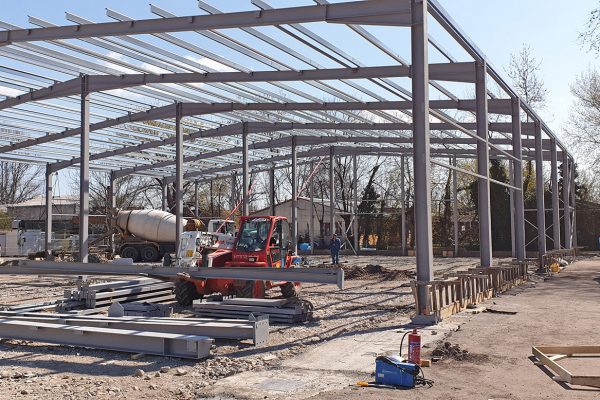
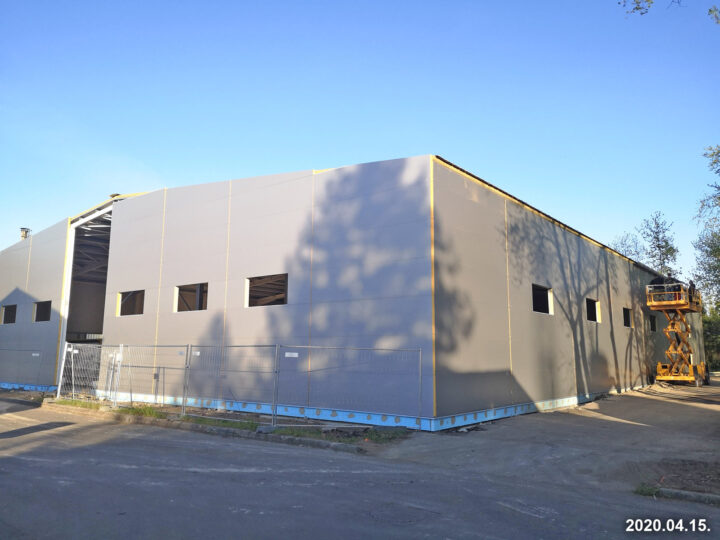
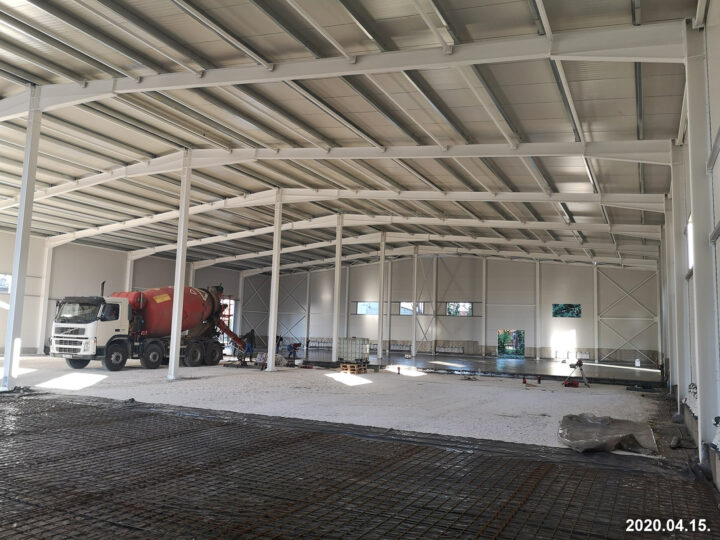
Of course, the fact that we were able to mobilise a number of our old, reliable partners also contributed to our success. They carried out their various activities, almost in parallel. For example, while the design was still in progress, work was already underway on the ground, and Swedsteel’s factory in Biatorbágy was already producing some components. Parallel coordination of several engineering activities was therefore necessary during construction.
But the good work has paid off: You have also been commissioned to carry out the other phases?
That’s right: more doors have opened for Z-Door! The first phase followed the second cycle of the pandemic. The task was to build 5 600 m2 of new halls, and to carry out reconstruction work. The main frame of the 24-metre-wide reinforced concrete structure was made of prefabricated elements. Swedsteel beams were used on top. But at this stage, they were not the only ones ordered from them, they also supplied the high fire safety sandwich panels for the roof and facade. An interesting feature of the building complex is that it also includes a production pavilion, which consists of four smaller halls of 200 m2, integrated into a single space.
In an emergency, you have to work at emergency speed. But speed was facilitated by several factors. As general planners, our job was made easier by the fact that we did not have to “reinvent” certain Swedsteel junction solutions, as they were already provided, and tried and tested by the company. They can therefore be easily integrated into our designs. One can only imagine how important this can be in the project, where the design was almost simultaneous with the construction (we even set up an office on site, where two colleagues were constantly correcting the drawings). I should note here that, although design and construction are separate professions, I would say that the most important advantage of our company is the combined knowledge and experience of design and construction. We try to turn the benefits of this, to the benefit of our customers. This is, of course, reflected in our product choices, because we know what technical parameters and properties Swedsteel profiles, for example, have in terms of installation potential. This combined knowledge puts us in a good position in the market, because we can follow specifications, i.e. customer requirements, very quickly and flexibly.
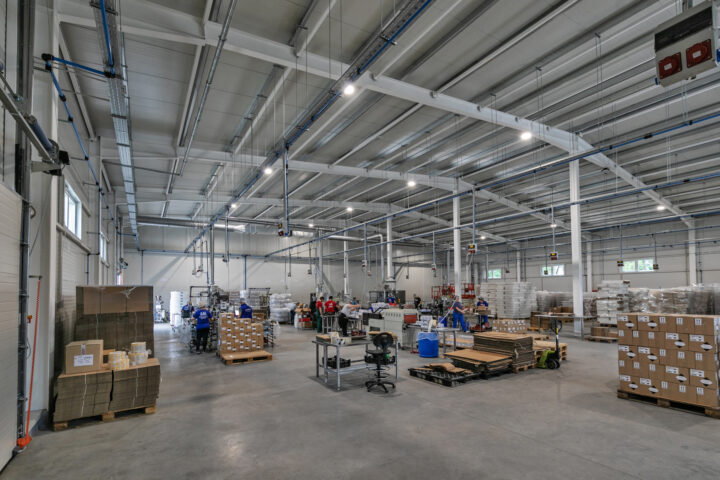
If the work, and the cooperation with Swedsteel, was so successful, it can be assumed that the relationship was honed during the joint construction of a number of halls.
We have a long-standing professional relationship with the professionals there, we have been their customers since the company was founded. Our first joint project was the design of a 2 000 m2 special slab structure for a lightweight building for the Ivanics car showroom. A second floor had to be added, but not actually on top of it, but in the existing structure. The skeleton structure of a 26 m wide, 8 m high, 3 200 m2 former warehouse was given. It had to be sawed in two at its columns, and an internal slab grip could be inserted. Swedsteel supplied the C and U profiles for the lightweight assembled slab. Again, using structural calculations to demonstrate fire safety compliance, we collaborated on the sizing and approval of the complete structure, which included heterogeneous materials such as USB sheets.
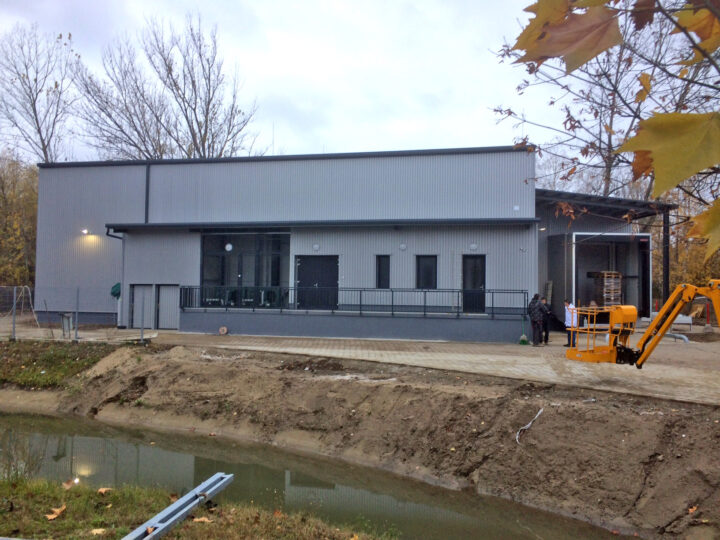
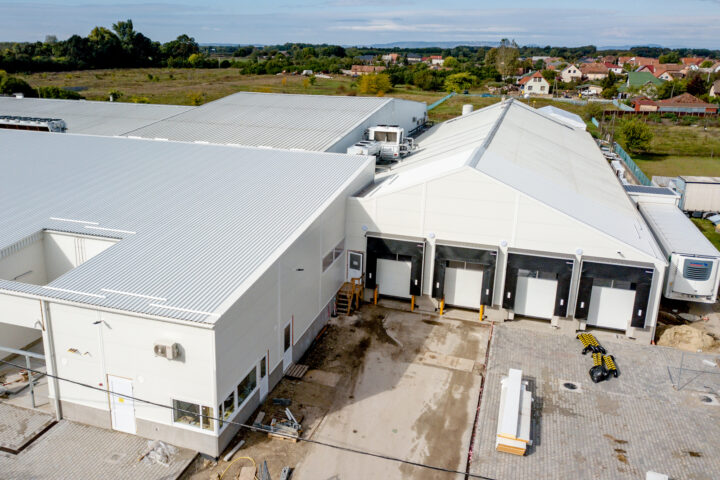
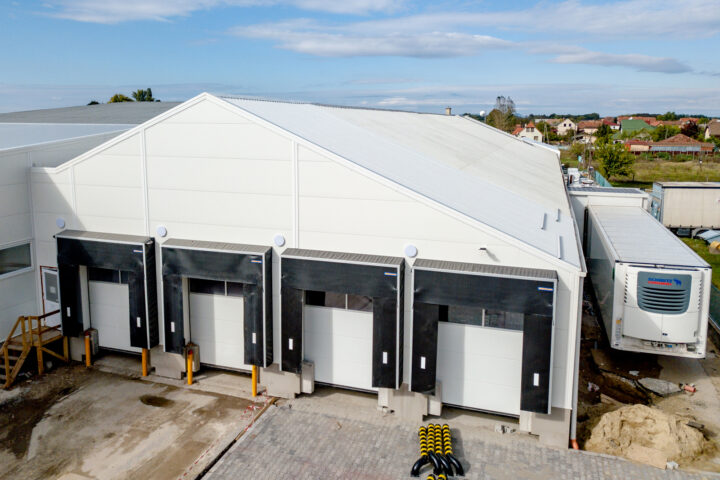

But we have also built cold storage for PalmiGold LLC. and Eisberg. For the former we only supplied the Z and C beams, for the latter we supplied several thousand m2 of trapezoidal sheeting for the roof cladding. And in Nagytőke, a 1 250 m2 single-air hall and 2 buildings, with a floor area of 200 m2 for social facilities were erected for a fine concrete plant. For this project, Swedsteel sandwich panels were used for the partition walls, roof and side walls. Swedsteel accessories were also used on several occasions. For example, their gutter system, which is interchangeable, blends well with the exterior panels, and is good in form and detail. In addition, they are available in several shades of colour. Just like Swedsteel trapezoidal plates. These have a special plastic coating on top of a hot-dip galvanised layer on a steel base. The resulting surface finish not only makes the product even more resistant to corrosion, but also makes the materials available in vivid, or even more subdued colours. For the architect, this is also important, because we want to raise the aesthetic level of industrial halls to a level that converges with the visual landscape of public buildings. We want industrial, agricultural and logistical buildings to be able to offer their users, their partners and their business partners, a subjective experience, in addition to their practicality.
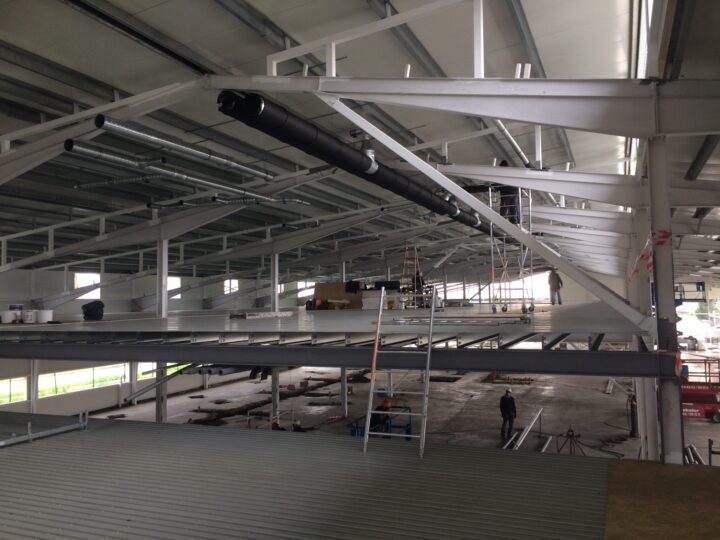
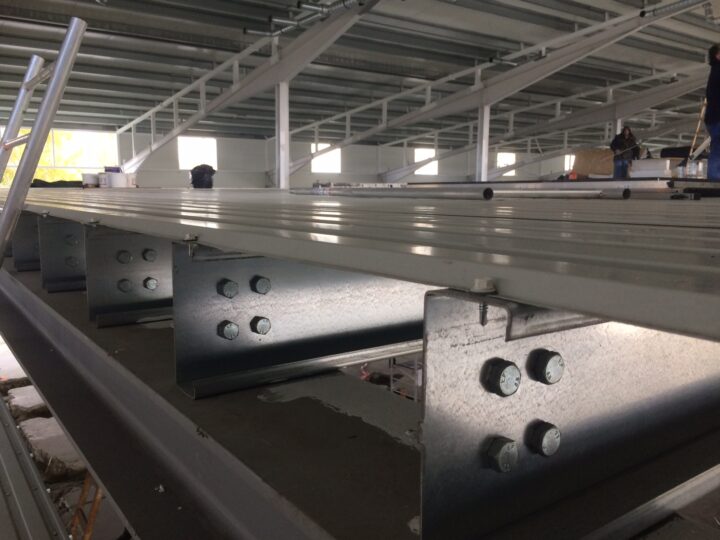
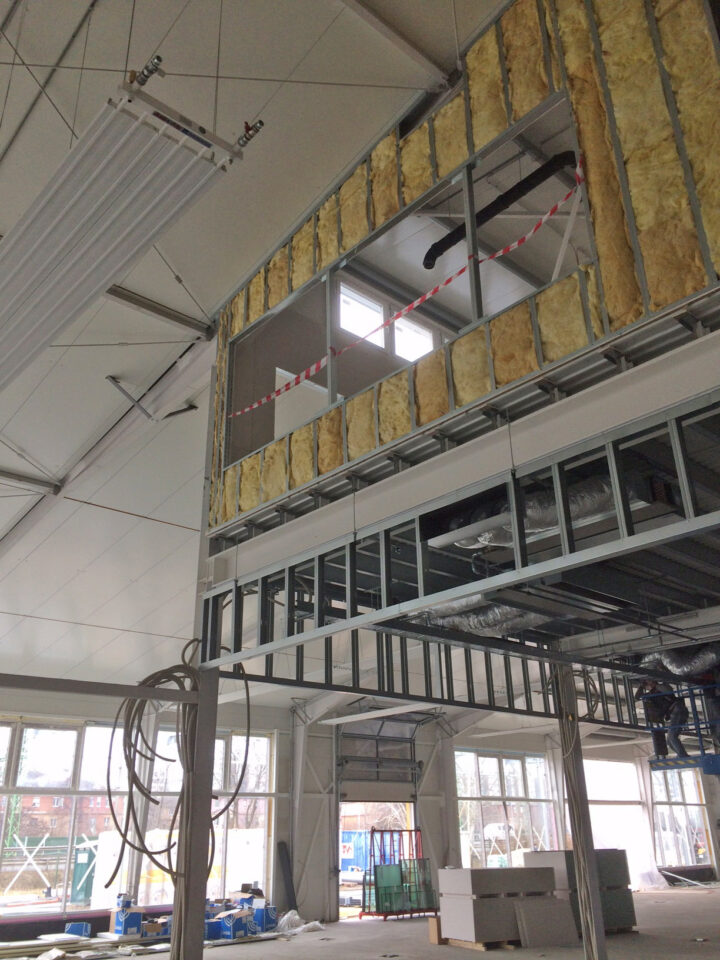
From the above, it would appear that Swedsteel, which is – presumably – more than just a supplier to manufacturers.
A colleague and good friend of mine once said that the real challenge of the 21st century is no longer competition, but cooperation. I fully agree with this philosophical statement, because we can only remain on this planet Earth if we achieve this. If the opposite happens, our time here will be very limited. And it is perhaps clear from this that the principle of sustainability is one of the defining shapers of our corporate endeavours. We used to live our own lives in such a way that, from wherever in the world we got a request, we jumped in and did it. But now, increasingly, our main strategy is to stay in the region. Here we try to find subcontractors, suppliers. Swedsteel fits into this picture, with a very good domestic manufacturing base and engineering staff, producing excellent Swedish steel products. When I say Swedish Steel , my preference for localism seems to stumble, as I mention the name of a distant country. However, durability is an important environmental consideration, in so far as it is not only in the interests of the owner, but also of the environment, if it does not prematurely become waste. This can reduce the carbon footprint of the environment, leaving a smaller ecological footprint for each project. If we want to leave something lasting, it should be our completed projects: public buildings, churches and, of course, halls. Swedsteel is indeed a good partner in this. We know what they are strong at. For certain parts of the work, we approach them from the beginning, we listen to their suggestions, we work together to create certain subsystems of the structure. So, if we start with Swedsteel materials, we plan with them from the very first design phase, because who better to be an expert on their products, than they themselves. It also puts us ahead of the game: cooperation allows us to optimise our plans. So, as an architect, I would like to emphasise once again that it is the intellectual added value – in addition to the quality of the products, of course – that has consolidated our commitment to Swedsteel.